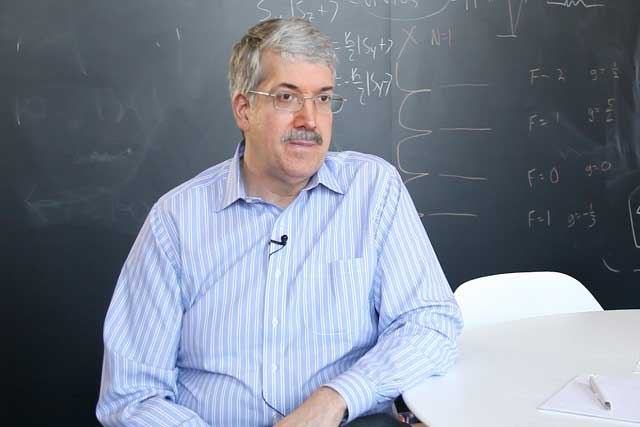Cosmic Microwave Background Polarization
Physicist Lyman Page on thermal radiation, quadrupolar distribution, and the early Universe
videos | August 5, 2015
How do polarized sunglasses work? What is polarization in terms of electric fields? Where does quadrupolar pattern of radiation come from? These and other questions are answered by Prinston Henry De Wolf Smyth Professor of Physics, Lyman Page.
So the cosmic microwave background is the thermal radiation left over from the Big Bang, from the birth of the Universe, and it is polarized. So what does that mean? First of all, it’s thermal radiation, that means it’s just like a radiation that comes off of, you know, a stove burner, or radiation that comes from the Sun, or radiation that comes from a radiator. It’s electromagnetic radiation made of oscillating electric and magnetic fields. So, what does polarization mean there? Polarization just means that the electric fields in the radiation are oscillating more one way than the other.

Perfect thermal radiation is not polarized, it doesn’t have any polarization properties, yet the cosmic microwave background is polarized. So it’s a fundamental process. So, how does it get polarized? Where does polarization come from? We’re all familiar with it: for example, if sunlight comes and scatters of the atmosphere, it’s polarized. But even more commonly, say, if it’s scattered off the hood of your car – it’s polarized. The radiation comes in, and just because of the interaction of the light with the atoms in the hood of your car, the light you see ends up being polarized with the electric field oscillating more like that than like that. That’s why polarized sunglasses work.
This is a pretty neat process. You can see that the situation has to be just right. Imagine for a moment you have cold spots up here and hot spots. There’s not just the radiation that’s coming out towards you, but what electrons are doing at the same time is they’re taking those hot spots, so this is polarization now, and it’s scattering that into the cold spots. So the same time it’s making polarized radiation in this direction, it’s trying to equalize the temperatures of these other two. So all these processes are going on in the early Universe.





























